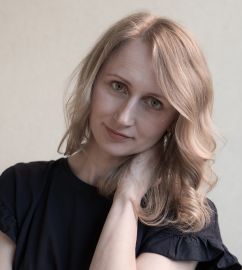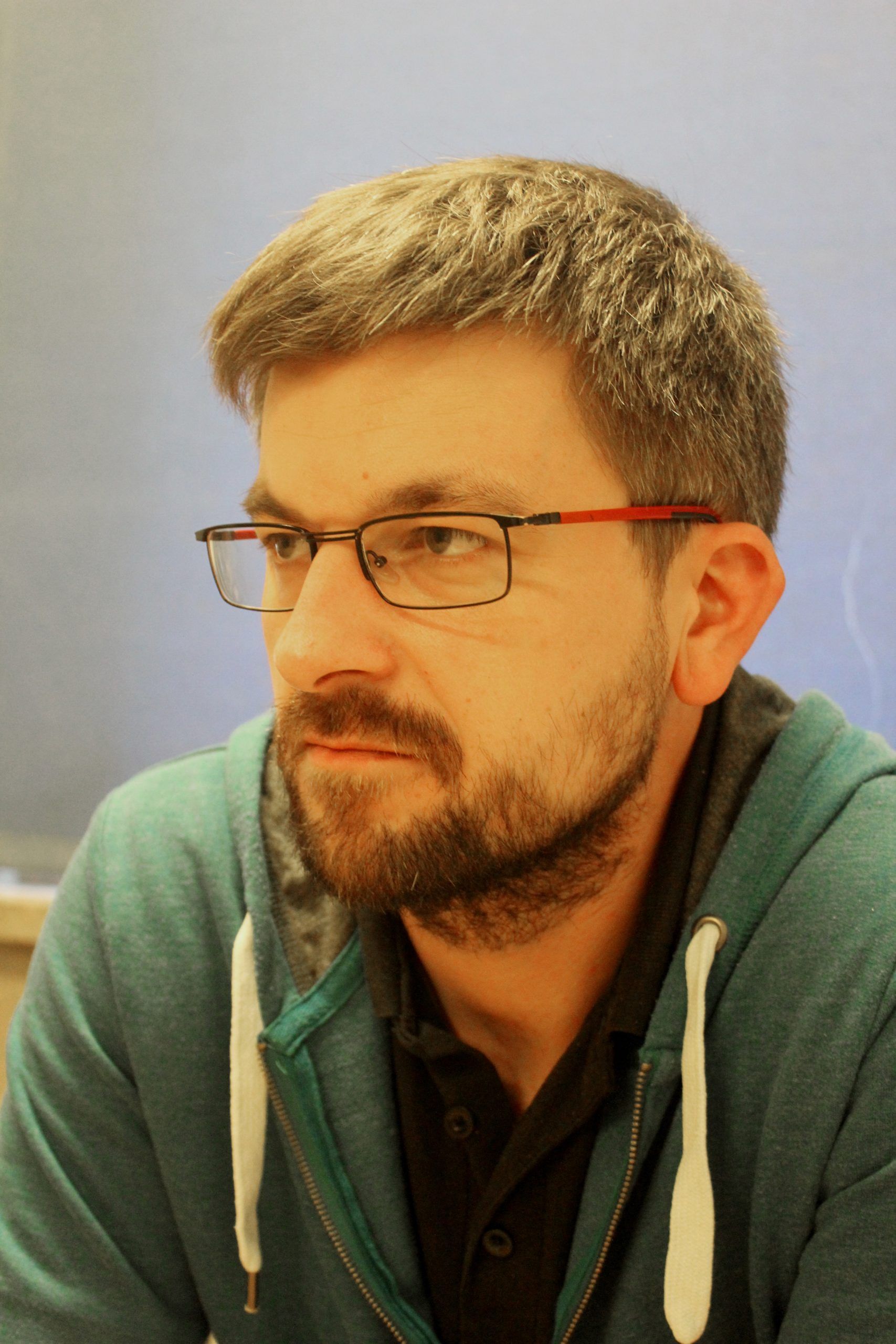The exhibition of tactile art enables blind and visually impaired visitors to have close, direct contact with the artwork. Sighted viewers have a unique chance to broaden their perception of the work.
Galleries and museums in Poland are increasingly preparing exhibitions and events with a view to the participation of visitors who are visually impaired. Tactile tours make it possible to experience selected works of art through touch. Audiodescriptions or Braille descriptions introduce the viewer to the origins of the work and the creative process behind it. These activities generally involve selected works, whether from art collections or exhibitions. Exhibitions that are entirely addressed to blind and visually impaired individuals are still rare.
The latest exhibition that can be fully perceived by touch is Dotyk Sztuki/Touch of Art, which is a follow-up to an artistic initiative of the same title which was initiated in 2019 and implemented by the Institute of Fine Arts of the Faculty of Arts at Maria Curie-Skłodowska University in Lublin. The aim of the project was to prepare an exhibition fully adapted to tactile perception. This is how the exhibition was created, presenting works of tactile art made by nearly 40 artists.
The exhibition is curated by Dr Anna Beata Barańska and Dr Radosław Skóra.
Anna Beata Barańska:
The project Dotyk Sztuki/Touch of Art aims to make culture more accessible to individuals who are blind or who suffer from limited visual perception or visual impairments, and to widen the perception of sighted audiences. (…)
On display are sculptures, art objects, installations and spatial paintings. A fully accessible exhibition has been prepared for the blind and visually impaired. All of the artworks represent tactile art, which affects the viewer with their material properties; they can be touched, stroked and sometimes even hugged. Touch creates a very close, even intimate contact between the work and the viewer, stimulating the senses and encouraging the recognition of the properties of objects and the distinction of textures. For a more complete reception of the works, an audio description of the exhibits has been prepared for the blind and visually impaired.
For sighted viewers, the dominant sense for the reception of art is sight and they do not have the opportunity to freely touch works of art every day in a gallery or museum. The exhibition Dotyk Sztuki/Touch of Art project provides an opportunity to combine the senses of sight and touch in order to augment the perception of artworks. Visual impressions, which determine the cognition of a work of art, are supplemented by touch and often also by other senses, such as hearing, smell and taste. Multi-sensory perception not only allows a closer, more direct contact with the work, but it often allows the viewer to commune with the work for longer. For sighted viewers, the sense of touch becomes just as important as the sense of sight and makes the exhibition fully accessible and arguably even more interesting....
The exhibition Dotyk Sztuki / Touch of Art was first presented at the Meeting of Cultures Centre in Lublin, in the Temporary Exhibitions Gallery, in June 2023.
The second presentation will take place at Galeria Bielska BWA in Bielsko-Biała in January 2024.
Artists at the exhibition:
Małgorzata Bałdyga-Nowakowska, Anna Beata Barańska, Dorota Banaszek, Oliwia Beszczyńska, Piotr Butkiewicz, Magda Maria Chomiak, Mariusz Drzewiński, Dominika Gacka, Małgorzata Gorzelewska-Namiota, Klaudia Górska, Piotr Gryz, Anna Gwiazda, Jarosław Hulbój, Agnieszka Jankowska, Blanka Jaworska, Hubert Krawczyk, Tomasz Krzpiet, Alicja Kupiec, Konrad Kuźniewski, Agnieszka Łakoma, Kamil Łata, Małgorzata Łojko, Magdalena Mańkowska, Marek Mazanowski, Ewa Niesterowicz, Marcin Noga, Kamila Osowicz, Sławomir Plewko, Kamil Siczek, Radosław Skóra, Katarzyna Sienkiewicz, Piotr Sobiesiak, Aleksandra Sojak-Borodo, Zbigniew Stanuch, Magdalena Stecka, Elwira Sztetner, Natalia Ślizowska, Piotr Zieleniak.  Anna Beata Barańska
Anna Beata Barańska
Studied painting at the Faculty of Arts of the Institute of Fine Arts of the Maria Curie-Skłodowska University in Lublin (2001-2006).
She has been working at her alma mater since 2006, and since 2016 she has been heading the Studio of Painting Technologies and Techniques.
In 2016, she was awarded the degree of Doctor of Fine Arts in the field of visual arts.
She is the initiator and curator of the project Dotyk Sztuki/Touch of Art. Her main areas of artistic interest are painting and video.
She has participated in more than 90 festivals and exhibitions held abroad and in more than 70 in Poland; she has won more than a dozen awards and honourable mentions.  Radosław Skóra
Radosław Skóra
Graduate of the Faculty of Arts at the Maria Curie-Skłodowska University in Lublin (2003). In 2020, he defended his doctorate at the Academy of Academy of Fine Arts in Warsaw. Assistant professor at the Department of Sculpture and Ceramics at the Faculty of Arts of the Maria Curie-Skłodowska University in Lublin.
Artistic activity in the field of sculpture traditional, monumental and small sculptural forms.
He has held four solo exhibitions; and participated in 19 group exhibitions.
Galeria Bielska BWA, Upper room, Bielsko-Biała, ul. 3 Maja 11
Dotyk Sztuki / Touch of Art
19 January – 25 February 2024
The opening: Friday, 19 January 2024 at 6 pm
Free curated tour at 5 pm
The exhibition is curated by Dr Anna Beata Barańska and Dr Radosław Skóra
Project team:
Associate Professor Bogusław Marek – teacher of the blind and visually impaired; Associate profesor Ewa Niestorowicz – teacher of the blind and visually impaired; AssociateProfessor Anna Perłowska-Weiser; Kamil Siczek, PhD; Oliwia Beszczyńska MA; Dorota Lis, MA; Grzegorz Więcek, MA.
Audio description: Marta Ryczkowska, PhD.
Identification of Visual Project: Sławomir Plewko, PhD.
________________________________________________________________________________________
Curated tour for the blind and visually impaired from the Bielsko-Biała branch of the Polish Association of the Blind (PZN) for Agata Agatowska’s exhibition “A Day on Mars”, 2017, photo report by Justyna Łabądź >>

